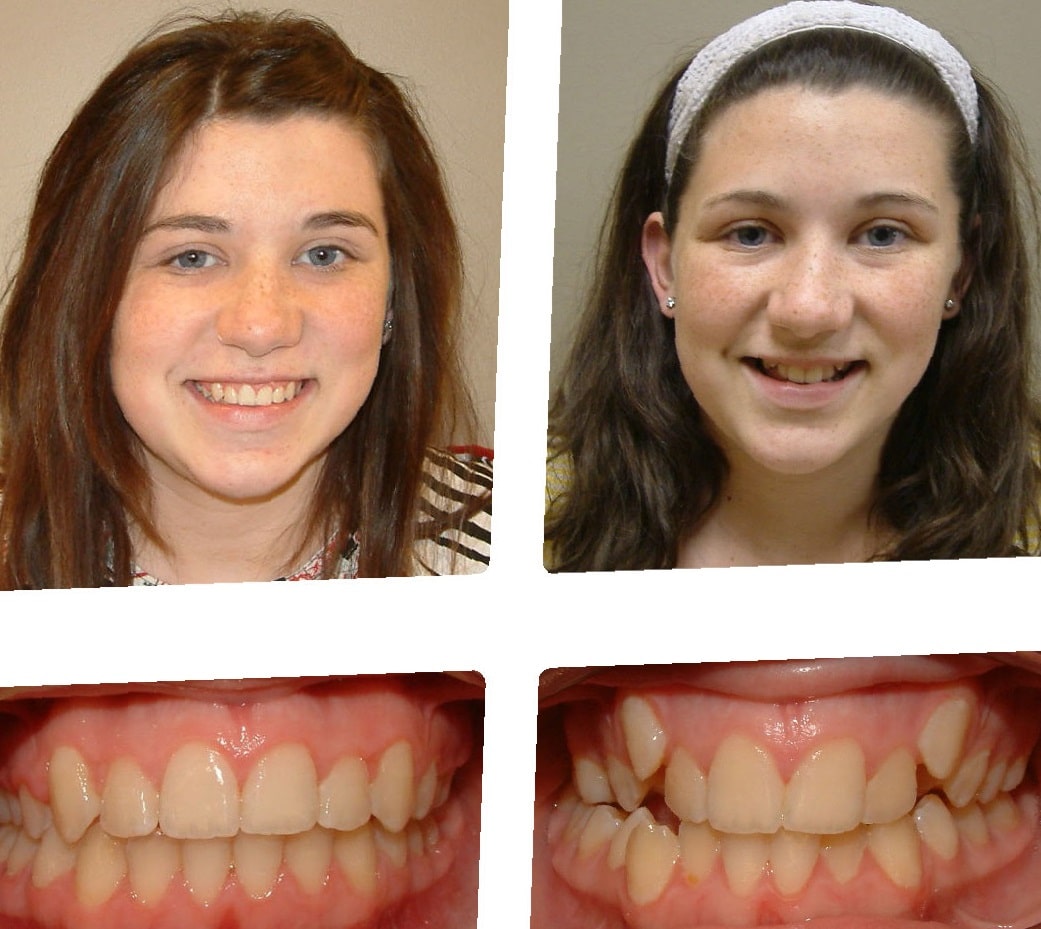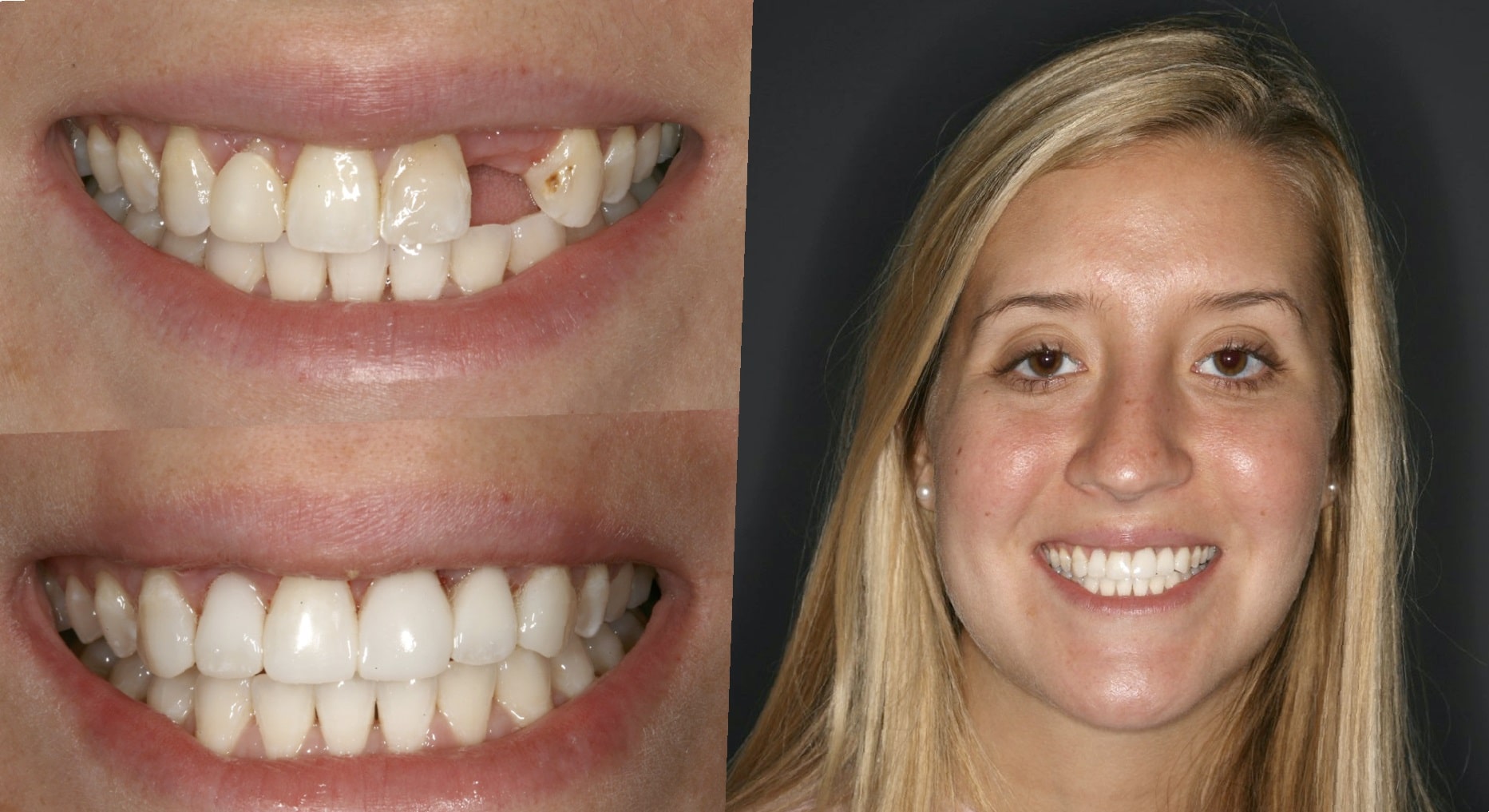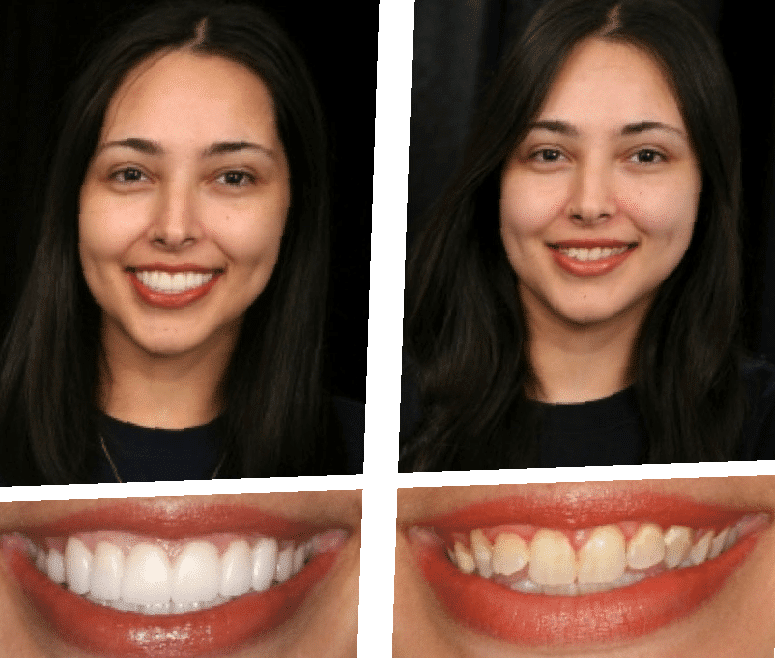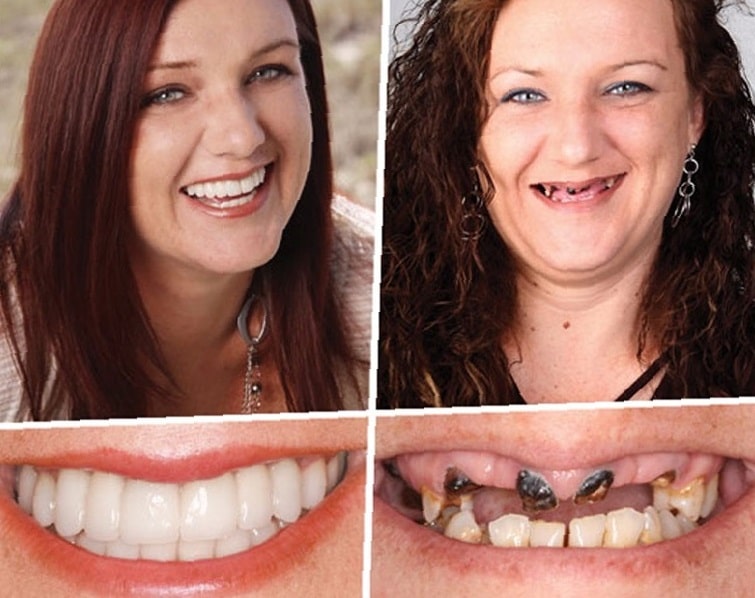Bone grafting is a crucial procedure in the field of dental implants, and understanding its importance is essential for anyone considering this treatment. In this blog post, we will delve into the fascinating world of bone grafts, exploring what they are, why they are necessary for dental implants, and how they can improve implant success. We will also discuss the various types of bone grafting materials, their effectiveness in improving bone density, and reducing the risk of implant failure. Additionally, we will explore how bone grafting can enhance the aesthetics and functionality of dental implants, as well as the cost considerations associated with this procedure. So, let’s dive in and uncover the valuable role of bone grafting in the world of dental implants!

What Is A Bone Graft?
A bone graft is a surgical procedure in which a piece of bone or a bone substitute is transplanted to a specific area of the body to repair or replace bone tissue. It is commonly used in dentistry to restore lost or damaged bone in the jaw, particularly in preparation for dental implant placement. The goal of a bone graft is to create a strong foundation for dental implants by providing adequate support and stability.
There are several reasons why a bone graft may be necessary for dental implants. One of the main reasons is bone loss in the jaw, which can occur due to tooth loss, periodontal disease, or trauma. When a tooth is lost, the surrounding bone can gradually deteriorate and become too thin or weak to support an implant. In such cases, a bone graft may be required to build up the jawbone and provide a suitable foundation for the implant.
Another situation where bone grafting is necessary is when a patient has been wearing removable dentures for a long time. Dentures do not stimulate the jawbone like natural teeth, leading to bone resorption over time. To ensure successful implantation, bone grafting may be performed to restore the lost bone and create a stable environment for the implants.

Why Is Bone Grafting Necessary For Dental Implants?
When it comes to dental implants, bone grafting plays a crucial role in ensuring a successful outcome. But why is bone grafting necessary for dental implants? Let’s dive into the details and explore the significance of this procedure.
First and foremost, it’s essential to understand the basics of dental implants. Dental implants are artificial tooth roots that are placed into the jawbone to support a replacement tooth or bridge. However, for the implants to be securely and firmly held in place, they require a stable foundation, which is provided by the jawbone.
But what happens when the jawbone lacks the necessary density or volume to support dental implants? This is where bone grafting comes into play. Bone grafting involves strengthening and building up the jawbone by adding bone graft materials, such as synthetic bone or bone from another part of the patient’s body.
- Using bone grafts ensures that there is enough bone available to support the dental implants effectively. The grafting procedure stimulates the growth of new bone cells around the graft material, creating a strong foundation for the implants.
In addition to providing a stable base for dental implants, bone grafting also offers several other benefits. It helps prevent potential complications, such as implant failure or the need for additional procedures in the future. By ensuring sufficient bone density, bone grafting can significantly improve the long-term success and durability of dental implants.
| Benefits of Bone Grafting for Dental Implants: |
|---|
| 1. Improved Stability: By strengthening the jawbone, bone grafting provides a stable foundation for dental implants, ensuring their long-term stability. |
| 2. Enhanced Aesthetics: Bone grafting helps maintain the facial structure and prevent the appearance of a sunken-in or sagging appearance caused by severe bone loss in the jaw. |
| 3. Improved Functionality: Dental implants supported by a healthy jawbone allow for better biting and chewing functionality, mimicking the natural teeth more effectively. |
| 4. Long-term Durability: With sufficient bone density, dental implants have a higher chance of lasting for a lifetime, reducing the need for future replacements or repairs. |
In conclusion, bone grafting is a necessary step for dental implants when the jawbone lacks the required density or volume. By providing a stable foundation and promoting bone growth, bone grafting enhances the overall success and longevity of dental implants. Moreover, it offers multiple benefits, including improved stability, enhanced aesthetics, better functionality, and long-term durability.
Improving Bone Density Before Dental Implantation
Before undergoing dental implantation, it is essential to have sufficient bone density in the jaw to ensure successful implant placement and long-term stability. However, many individuals may face challenges due to low bone density caused by factors such as tooth loss, gum disease, or osteoporosis. Fortunately, there are several techniques available to improve bone density and increase the chances of a successful dental implant procedure.
One of the most commonly used methods for improving bone density before dental implantation is bone grafting. Bone grafting involves the placement of bone or bone-like material in the area that requires increased density. This procedure stimulates the growth of new bone cells, strengthens the jawbone, and provides a solid foundation for the dental implant.
There are different types of bone grafting materials available for use, including autografts, allografts, and xenografts. Autografts involve using bone tissue from the patient’s own body, usually taken from another area of the jaw, hip, or tibia. Allografts use bone tissue from a donor, which is carefully processed and sterilized to ensure compatibility. Xenografts, on the other hand, involve using bone material from animals, which is also processed to eliminate any risk of rejection.

Preventing Bone Loss After Tooth Extraction
After undergoing a tooth extraction, it is common for individuals to experience bone loss in the area where the tooth once was. This bone loss, also known as socket preservation, occurs due to the natural healing process of the body. When a tooth is extracted, the underlying roots are removed, which in turn disrupts the stimulation and blood supply to the surrounding bone. As a result, the body reabsorbs the bone tissue, leading to a reduction in its volume and density. To mitigate this issue and prevent further bone loss, it is important to take certain preventive measures.
One effective method for preventing bone loss after tooth extraction is socket preservation. This procedure involves placing a bone grafting material into the empty socket immediately after the tooth extraction. The bone grafting material, which can be synthetic or from an external source, acts as a scaffold for new bone formation. It provides support and stability to the surrounding tissues, thus promoting proper healing and minimizing bone loss. Additionally, it preserves the natural shape and contour of the jawbone, ensuring optimal conditions for future dental implant placement, if desired.
Another approach to prevent bone loss after tooth extraction is the use of platelet-rich fibrin (PRF). PRF is a substance derived from the patient’s own blood and contains a high concentration of platelets and growth factors. These growth factors are essential for stimulating tissue regeneration and promoting the formation of new bone. By placing PRF in the socket after tooth extraction, the body’s natural healing processes are accelerated, leading to improved preservation of the jawbone.
| Advantages of Preventing Bone Loss: |
|---|
|
Types Of Bone Grafting Materials
In the field of dentistry, bone grafting is a common procedure that is used to promote and enhance the success of dental implants. During this process, a piece of bone or a bone substitute is placed in the jaw to stimulate the growth of new bone tissue. This is essential when there is insufficient natural bone available to support the dental implant. Bone grafting materials play a crucial role in this procedure, as they provide the necessary scaffold and promote the regeneration of bone.
There are several types of bone grafting materials that can be used depending on the specific needs of the patient. One commonly used material is autograft, which is bone taken from the patient’s own body, typically from the hip or jaw. Autografts are considered the gold standard as they possess osteoconductive, osteoinductive, and osteogenic properties, meaning they provide a scaffold for bone growth, initiate the formation of new bone, and contain cells that can differentiate into bone-forming cells.
Another type of bone grafting material is allograft, which is bone taken from a human donor, usually sourced from a tissue bank. Allografts are processed to remove all living cells, leaving behind a structural matrix that serves as a scaffold for new bone formation. Although they lack the osteogenic properties of autografts, allografts still possess osteoconductive and osteoinductive qualities, allowing for successful bone regeneration.

- Additionally, synthetic bone graft substitutes are widely used in dental implant procedures. These materials are typically made from calcium-based compounds, such as calcium phosphate or calcium sulfate. While not as effective in promoting bone growth as autografts or allografts, synthetic substitutes have the advantage of being readily available and eliminating the need for additional surgery to harvest bone from the patient’s body.
Bone grafting materials play a crucial role in the success of dental implant procedures. The choice of material depends on various factors such as the patient’s bone quality, quantity, and personal preferences. Dentists and oral surgeons thoroughly evaluate each case and select the most suitable bone grafting material to ensure optimal results.
| Type | Properties | Pros | Cons |
|---|---|---|---|
| Autograft | Osteoconductive, osteoinductive, osteogenic | High success rate, natural bone source | Requires additional surgery, limited availability |
| Allograft | Osteoconductive, osteoinductive | Readily available, eliminates donor site morbidity | No osteogenic properties |
| Synthetic substitutes | Osteoconductive | Readily available, eliminates need for second surgery | Less effective in bone growth stimulation |
How Does A Bone Graft Improve Implant Success?
A bone graft is a surgical procedure that involves transplanting bone tissue or a bone substitute to repair or replace bones that have been damaged or lost due to injury or disease. In the context of dental implants, bone grafting plays a crucial role in improving the success and long-term stability of the implant.
When a person loses a tooth, the surrounding jawbone may begin to deteriorate over time due to lack of stimulation. This bone loss can make it difficult to support a dental implant securely. In such cases, a bone graft is performed to strengthen the jawbone and provide a solid foundation for the implant.
There are several ways in which a bone graft improves implant success. Firstly, it helps to regenerate and rebuild the lost or damaged jawbone. This is particularly important if the patient has experienced significant bone loss or has a thin jawbone. By adding bone grafting material, such as autografts (bone taken from the patient’s own body), allografts (bone taken from a donor), or synthetic substitutes, the jawbone can be restored to an optimal shape and density.
- Stimulation of New Bone Growth:
A bone graft stimulates the growth of new bone tissue in the recipient site. The graft acts as a scaffold, providing a framework for the patient’s own cells to regenerate and deposit new bone. Over time, the grafted bone integrates with the existing jawbone, forming a strong and supportive structure for the dental implant.
- Promotion of Osseointegration:
Osseointegration is the process by which the dental implant fuses with the surrounding bone, creating a stable and secure foundation. Inadequate jawbone density or volume can hinder this process. The addition of a bone graft helps to enhance osseointegration by providing the necessary support and density required for the implant to integrate effectively.
- Prevention of Bone Resorption:
After tooth loss, the jawbone may undergo resorption, a natural process where the bone diminishes in size and density. By placing a bone graft, the resorption process is slowed down or prevented altogether. This not only helps in preserving the jawbone structure but also maintains the overall facial aesthetics.

| Types of Bone Grafting Materials | Advantages | Disadvantages |
|---|---|---|
| Autografts (patient’s own bone) | – High success rate- Contains live cells and growth factors for bone regeneration | – Requires additional surgery to harvest the bone- Limited availability and quantity |
| Allografts (donor’s bone) | – No need for a second surgical site- Abundant availability | – Slightly lower success rate compared to autografts- Potential risk of disease transmission |
| Synthetic substitutes (ceramic or bioactive materials) | – No risk of disease transmission- Easily accessible | – Lower success rate compared to autografts and allografts- May require additional time for integration |
In conclusion, a bone graft serves as a crucial step in improving the success of dental implants. By stimulating new bone growth, promoting osseointegration, and preventing bone resorption, a bone graft ensures the longevity and stability of the implant. The choice of bone grafting material should be based on individual patient needs, with various options available such as autografts, allografts, and synthetic substitutes. Consulting with a qualified dental professional is essential to determine the most appropriate approach for achieving optimal implant success.
Shortening The Healing Time With Bone Grafting
A bone graft is a surgical procedure that involves taking bone from one area of the body and transplanting it to another area where bone is needed. It is commonly used in dental implant surgeries to promote bone growth and facilitate the successful integration of the dental implant.
One of the important benefits of bone grafting is its ability to shorten the healing time after dental implant surgery. When a dental implant is placed in the jawbone, it needs to fuse with the surrounding bone for stability and long-term success. However, if the jawbone lacks sufficient density or volume to support the implant, it may take longer for the implant to integrate and heal properly.
Bone grafting helps to address this issue by providing additional bone material to the site of the dental implant. This not only improves the bone density and volume but also accelerates the healing process. The transplanted bone serves as a scaffold for new bone formation, stimulating the body’s natural healing response. The integration of the graft with the existing bone helps to create a strong foundation for the dental implant, promoting faster healing and reducing the risk of implant failure.
Enhancing The Aesthetics And Functionality Of Dental Implants
Enhancing the Aesthetics and Functionality of Dental Implants
Dental implants have become a popular solution for replacing missing teeth. They not only restore the functionality of the mouth but also enhance the overall aesthetics of a person’s smile. With advancements in dental technology, implants can now be customized to match the color, size, and shape of your natural teeth. This allows for a seamless integration into your smile, making it difficult for others to even notice that you have an implant.
One of the key reasons why dental implants are so effective in enhancing aesthetics is their ability to stimulate bone growth. When a tooth is lost, the underlying bone begins to deteriorate. This can lead to a sunken or aged appearance of the face. However, dental implants act as artificial tooth roots, providing the necessary stimulation for bone growth. This helps in preserving the facial structure and preventing the deterioration of the jawbone.
Furthermore, dental implants offer improved functionality compared to other tooth replacement options such as dentures or bridges. They are designed to function just like natural teeth, allowing you to eat, speak, and smile without any discomfort or limitations. Unlike dentures that can slip or cause difficulty in chewing, dental implants provide a permanent and secure solution.

- List of benefits of dental implants in enhancing aesthetics and functionality:
| Enhancing Aesthetics | Improving Functionality |
|---|---|
| 1. Natural appearance: Dental implants can be customized to match the color, shape, and size of your natural teeth, providing a seamless integration into your smile. | 1. Improved chewing: Dental implants function like natural teeth, allowing for better chewing and enjoyment of your favorite foods. |
| 2. Preserves facial structure: Implants stimulate bone growth, preventing the deterioration of the jawbone and preserving the overall facial structure. | 2. Restored speech: Dental implants eliminate the speech impediments often associated with missing teeth, allowing you to speak with confidence. |
| 3. Boosts self-confidence: Having a complete and attractive smile with dental implants can significantly enhance your self-image and confidence. | 3. Permanent solution: Unlike dentures, dental implants are a long-term solution that can last a lifetime with proper care. |
In conclusion, dental implants not only enhance the aesthetics of your smile but also improve the functionality of your teeth. They provide a natural and permanent solution for missing teeth, allowing you to regain your confidence and enjoy a full range of activities without any limitations. If you are considering dental implants, consult with a professional dentist who can guide you through the process and help you achieve the smile of your dreams.
Reducing The Risk Of Implant Failure With Bone Grafting
When it comes to dental implants, success is paramount. Dental implants are a popular and effective way to replace missing teeth, but the risk of implant failure can be a concern for patients. Fortunately, bone grafting can play a crucial role in reducing the risk of implant failure and improving the long-term success of dental implants.
One of the major causes of implant failure is a lack of sufficient bone density in the jaw. Without enough bone to support the implant, the implant may not integrate properly with the surrounding bone tissue, leading to failure. However, bone grafting can help address this issue by providing additional support and stability to the implant.
Cost Considerations For Bone Graft And Dental Implants
When it comes to getting dental implants, one crucial factor that often needs to be considered is the cost. Dental procedures can be expensive, and bone grafting is no exception. In this blog post, we will explore the cost considerations for bone graft and dental implants, helping you understand the financial aspect of this procedure.
First and foremost, it’s important to note that the cost of bone grafting and dental implants can vary significantly depending on several factors. These factors include the complexity of the case, the amount of bone grafting required, the location of the dental clinic, and the experience of the oral surgeon performing the procedure.
When considering the cost of bone grafting, it’s essential to understand that bone grafts are often necessary to provide a solid foundation for dental implants. A bone graft involves taking a small piece of bone from another part of the body or using synthetic bone material to augment the existing bone in the jaw. This additional procedure adds to the overall cost of getting dental implants.
- Cost of Bone Grafting Materials:
- Cost of the Dental Implant:
- Cost of the Surgical Procedure:
| Factors | Price Range |
|---|---|
| Bone Grafting Materials | $300 – $800 per graft |
| Dental Implant | $1,000 – $4,000 per implant |
| Surgical Procedure | $1,500 – $3,000 |
It’s important to remember that these prices are just rough estimates and can vary widely. Consulting with an oral surgeon or a dental professional is necessary to get an accurate cost estimate based on your specific case.
Additionally, it’s crucial to consider the long-term benefits and potential cost savings that come with dental implants. Unlike traditional dentures or bridges, dental implants can last a lifetime with proper care. Investing in implants may reduce the need for future dental work and maintenance, potentially offsetting the initial cost.

While cost is undoubtedly an important consideration, it’s essential to prioritize your oral health and long-term well-being. Seeking out a qualified oral surgeon who has experience in bone grafting and dental implant procedures is crucial for a successful outcome. Don’t hesitate to ask your dentist or oral surgeon about any financing or payment options they may offer to make the process more affordable.
In conclusion, the cost of bone graft and dental implants can vary depending on several factors. Understanding the various components that contribute to the overall cost, such as the bone grafting materials, dental implant, and surgical procedure, is essential. Consulting with a dental professional can provide you with a more accurate cost estimate and help you make an informed decision regarding your oral health.

Frequently Asked Questions
What is a bone graft?
A bone graft is a surgical procedure in which bone or bone-like material is transplanted to repair or regenerate bones that have been damaged or lost.
Why is bone grafting necessary for dental implants?
Bone grafting is necessary for dental implants because it helps to create a solid foundation and support for the dental implant. It provides the additional bone mass needed to securely anchor the implant in place.
How can bone density be improved before dental implantation?
Bone density can be improved before dental implantation through procedures such as bone grafting, bone augmentation, or sinus lift. These techniques help to increase the amount and quality of bone in the implant site.
How can bone loss be prevented after tooth extraction?
Bone loss can be prevented after tooth extraction by immediately filling the empty socket with a bone graft material. This helps to preserve the surrounding bone and minimize the risk of bone loss.
What are the types of bone grafting materials?
There are several types of bone grafting materials, including autografts (bone taken from the patient’s own body), allografts (bone taken from a donor), xenografts (bone taken from animals), and synthetic grafting materials.
How does a bone graft improve implant success?
A bone graft improves implant success by providing a stable and supportive base for the dental implant. It helps to strengthen the jawbone and ensures proper fusion and integration of the implant with the surrounding bone.
How does bone grafting shorten the healing time?
Bone grafting can shorten the healing time by promoting faster and more efficient bone regeneration. It helps to accelerate the formation of new bone tissue, allowing for quicker recovery and implant placement.
How does bone grafting enhance the aesthetics and functionality of dental implants?
Bone grafting enhances the aesthetics and functionality of dental implants by restoring the natural shape and volume of the jawbone. It helps to support the gums, improve facial appearance, and provide a solid foundation for the dental prosthesis.
How does bone grafting reduce the risk of implant failure?
Bone grafting reduces the risk of implant failure by increasing the stability and long-term success rate of dental implants. It strengthens the jawbone, minimizes the occurrence of bone resorption, and improves implant integration, reducing the chances of implant loosening or failure.
What are the cost considerations for bone graft and dental implants?
The cost of bone graft and dental implants can vary depending on factors such as the complexity of the procedure, the amount of bone grafting required, and the location of the dental clinic. It is best to consult with a dental professional to get an accurate cost estimate based on individual needs and circumstances.
